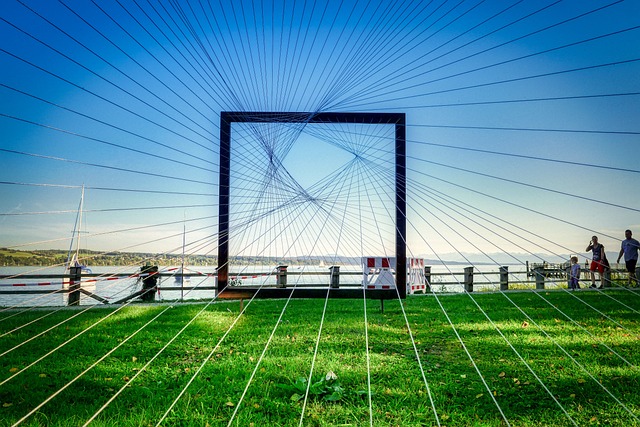
Now, what if your pipes sound like a symphony of clanks and rattles? This rattling, often known as “water hammer,” can be a sign that air is trapped in your piping system. It’s as if your pipes are playing their own game of tag. To resolve this, turn off your main valve and drain some water from the highest faucet in your home, letting the air escape. Then, slowly turn the water back on. Voilà! Your pipes should be much quieter.
Another issue you might face is pressure drops. If you’ve got the feeling that you’re getting a trickle instead of a torrent, it’s time to check for clogs. Like a traffic jam on the highway, clogs can slow things down significantly. A simple plunger can often do the trick, but if you’re dealing with stubborn blockages, a plumber’s snake might be your best bet.
Busting the Myths: The Top 5 Common Pipe Installation Issues and How to Fix Them
Another common myth is that you don’t need to worry about slopes in your pipes. Imagine trying to drink soup from a flat bowl – it just won’t work, will it? Pipes need the right slope to help water flow smoothly, or you might end up with costly blockages. Speaking of blockages, many folks think that all drain clogs are the same. Spoiler alert: they’re not! It’s crucial to diagnose the cause correctly. Whether it’s grease, hair, or something unexpected stuck in the pipes, knowing what you’re dealing with can help decide whether to reach for the plunger or call a pro.
And then there’s the idea that all pipes last forever. If only! Different materials have different lifespans. PVC and copper each come with their own quirks and degradation patterns – and trust me, waiting until you hear a weird noise or see a bulge in the wall is not the best time for a reality check.
Finally, many believe that installation is a DIY breeze. Sure, it might look easy on YouTube, but improper techniques can lead to more headaches down the line. Whether it’s misalignment or inadequate sealing, a poor installation job can create chaos instead of calm. So before you dive in, consider getting a second opinion or even bringing a pro on board. Your pipes will thank you!
Flow Problems Ahead: Essential Troubleshooting Tips for Post-Pipe Installation Success
First, let’s talk about pressure. If your water flow feels weak, it might be due to insufficient pressure. Ever tried to drink from a straw that’s pinched? Exactly! Your pipes may be pinched or clogged. Check for kinks or bends in the pipe that could restrict flow. Also, check your main water supply’s pressure. Low pressure at the source could be the culprit!
Now, onto leaks. Tiny leaks can lead to significant flow issues, sneaking past your radar like a ninja. Grab a flashlight and check joints and connections. If you spot wet areas, tighten those fittings! If a leak is too stubborn, it might be time to bring in the big guns, aka a plumber.
What about those pesky blockages? Think of them like traffic jams: they slow everything down. Hair, grease, or debris can accumulate over time, making your once-great pipe feel more like a clogged artery. A good drain cleaner or a bit of baking soda and vinegar can work wonders here, but remember: sometimes you just need to get your hands dirty with a plumber’s snake.

By keeping these troubleshooting tips in mind, you’ll ensure that your post-pipe installation journey flows smoothly, like a well-oiled machine.
From Leaks to Clogs: A Step-by-Step Guide to Tackling Common Pipe Installation Problems
First off, let’s chat leaks. Picture this: you’ve just installed a shiny new pipe, only to discover a drip-drip-drip that sounds like a ticking time bomb. The culprit? Often, it’s a loose connection. So, grab your wrench and give those joints a gentle—but firm—twist. If that doesn’t do the trick, you might need to replace the fittings or apply some plumber’s tape to create a better seal. Think of it as wrapping up a birthday present; a little extra attention goes a long way!
Now, onto clogs, the headache of every homeowner. It’s like your pipes have thrown a mini party and forgot to clean up afterward. Occasionally, they get blocked with debris or build-up. Start by trying a plunger—this trusty tool is basically the superhero of plumbing! If that fails, a plumber’s snake can reach deep into the pipes, like an explorer uncovering hidden treasures. You’d be surprised how often a quick DIY fix can save you from calling in the pros.
Remember, prevention is key! Ensure your pipes have the right slope during installation—like a gentle slide—so that water flows smoothly. With a little patience and these handy tips, you’ll be well on your way to mastering pipe installation problems, turning potential plumbing nightmares into minor bumps on the road.
DIY Dilemmas: How to Troubleshoot Pipe Installation Issues Like a Pro
First off, let’s talk leaks. Nothing throws a wrench in your plans quite like a rogue drip. If you’ve installed new pipes and notice a leak, don’t panic. It might just be a loose fitting. Grab your trusty wrench and give those connections a good tighten—like giving your favorite jar of honey a little twist to get it open. Still leaking? Try some plumber’s tape; it seals joints better than a superhero in a cape.

And what about those pesky sounds? Gurgles and clanks can send shivers down your spine. These noises usually signal air trapped in the pipes, like an upset tummy after a big meal. Bleed the air by turning on faucets and letting the water run for a bit. It’s like giving your plumbing a nice, refreshing drink!
Avoiding Plumbing Disasters: Quick Fixes for Common Post-Pipe Installation Headaches
First off, leaks are perhaps the most common headache post-installation. A tiny drip from a connection can feel like a ticking time bomb. Grab a wrench and double-check those fittings. Sometimes, all it takes is a little twist to seal the deal. If you’re still seeing that dreaded drip, a bit of plumber’s tape can work wonders. Picture it as a cozy blanket, wrapping around the threads to keep the water snugly inside!
Next up, let’s chat about airlocks in your pipes. Ever turn on a faucet only to be met with a sad trickle of water? It’s like expecting a refreshing drink from a well but getting a desert instead. A simple remedy is to turn off your main water valve and open the highest faucet in your home. Let gravity do its magic by draining the system, then reopen the valve! You’ll be amazed at how quickly normal flow returns.
Now, if you’re experiencing strange noises, it could be loose pipes rattling around. Think of them like an orchestra gone rogue. Just secure those pipes with brackets or cushions to get back to a harmonious household.
Lastly, keep an eye out for strange smells. If something smells off after your installation, it might be time for a deep clean. Sometimes, leftover debris can lead to funky odors. A simple flush with hot water and vinegar can clear up those unwanted scents, just like a refreshing spring breeze!
By keeping these quick fixes in mind, you can sidestep plumbing disasters and enjoy a smooth-running home. So, roll up your sleeves and tackle those post-installation hassles with confidence!
Life After Installation: Navigating the Challenges of Newly Laid Pipes
First off, let’s talk about adjustments. Newly laid pipes might not behave the way you’re used to. It’s crucial to keep an eye on them during their initial days. You might notice some sounds that make you wonder if you accidentally installed a nascent symphony orchestra beneath your floor. Don’t worry; it’s just the pipes settling into their new life, but staying alert to leaks or strange noises can save you a lot of headaches down the line. Think of it as teaching a puppy how to behave—patience and vigilance are your best friends.
Now, how about maintenance? Just like you wouldn’t skip an oil change on your new car, don’t overlook regular check-ups for your pipes. An ounce of prevention can go a long way. You want to keep those things flowing smoothly, right? Regular inspections and cleaning can help prevent any future mishaps, transforming your newly laid pipes from a potential nightmare into a well-oiled machine.
Meanwhile, watch your water usage. It’s easy to assume everything is running perfectly after installation, but being mindful of your usage can help you spot any irregularities. Think of your pipes like a water-saving superhero—you want to give them every chance to shine! So, get ready to embark on this journey of discovery. Your newly laid pipes are just the beginning of a captivating adventure!